
The Sagrada Familia, designed by the renowned architect Antoni Gaudí, stands as a testament to visionary creativity and intricate craftsmanship. This extraordinary basilica, still under construction more than a century after its inception, has become a symbol of Barcelona, attracting millions of visitors each year.
Often referred to as Sagrada Familia: Barcelona's Iconic Basilica, this architectural marvel showcases a unique blend of Gothic and Art Nouveau styles. Its soaring towers and elaborate facades tell stories of faith, nature, and Gaudí's deep reverence for the divine, making it a must-see landmark in the heart of the city.
The Architectural Marvel of Sagrada Familia: A Deep Dive into Gaudí's Masterpiece
The architectural details of the Sagrada Familia are as captivating as they are intricate. Gaudí's innovative use of geometry and natural forms creates a harmonious blend with its surroundings. For instance, the basilica features a variety of shapes inspired by nature, such as tree-like columns that support the nave, evoking the sensation of being in a forest. This connection to nature is essential to understanding Gaudí's vision, as he aimed to reflect God's creation within his designs.
Another remarkable aspect of the Sagrada Familia is its symbolic significance. Each façade tells a different story, representing various stages of Christ’s life. The Nativity Facade focuses on the birth of Jesus, while the Passion Facade depicts his crucifixion. These elements not only enhance the religious narrative but also engage visitors in a profound experience:
- Nativity Facade: Celebrates the birth with elaborate detail.
- Passion Facade: A stark contrast, emphasizes suffering and sacrifice.
- Glory Facade: Represents the glory of Jesus and resurrection.
Gaudí’s commitment to craftsmanship is evident in the use of multicolored mosaics and intricate sculptures throughout the basilica. The stained glass windows are particularly remarkable, filtering sunlight to create a vibrant play of colors within the interior. This use of light not only enhances the spiritual atmosphere but also showcases Gaudí's understanding of how natural elements can coexist with architectural design.
As the Sagrada Familia continues to evolve, modern construction techniques are being integrated with Gaudí's original vision. This blend ensures that the basilica remains a timeless masterpiece, bridging the gap between past and present. Visitors can witness this ongoing journey, making each visit a unique experience as they marvel at the fusion of tradition and innovation.
Exploring the Symbolism Behind Sagrada Familia: What Each Element Represents
The Sagrada Familia is not only a masterpiece of architecture but also a profound symbol of spirituality and devotion. Each element within the basilica has been meticulously designed to convey deeper meanings. For instance, the twelve towers represent the twelve apostles, while the three grand facades symbolize different aspects of Christ's life, enriching the visitor's understanding of the religious narrative embedded in the structure.
Gaudí's use of natural imagery extends beyond just architectural forms. The columns, resembling tree trunks, signify strength and growth, reflecting the connection between nature and faith. This approach allows visitors to feel a sense of being enveloped by creation, making the experience both immersive and spiritual. Moreover, the intricate details found in the basilica’s sculptures depict various saints and biblical stories, enhancing the overall message of hope and redemption.
To understand the multifaceted symbolism of the Sagrada Familia, one can explore key elements represented within the basilica:
- Light: Symbolizes divinity, as seen in the stained glass windows that illuminate the interior.
- Nature: Represents God's creation, reflected in the organic shapes and forms throughout the building.
- Faith: The overall design encourages contemplation and spiritual connection, inviting visitors to reflect on their beliefs.
As the basilica nears completion, its symbolism continues to resonate with those who visit. Each element, from the towering spires to the smallest details, works in harmony to tell a story of faith, hope, and the eternal connection between humanity and the divine. Thus, the Sagrada Familia remains an enduring icon of Barcelona, inviting exploration and reflection on its rich tapestry of meanings.
Visiting Sagrada Familia: Essential Tips for a Memorable Experience
Visiting the Sagrada Familia can be a highlight of your trip to Barcelona. To ensure a memorable experience, consider planning your visit wisely. Booking your tickets online in advance can save you time and help you avoid long queues, allowing you to immerse yourself in the beauty of this iconic basilica without distractions.
When exploring the Sagrada Familia, be sure to take your time to appreciate its intricate details. Consider joining a guided tour to gain insights into Gaudí's vision and the symbolism embedded in the architecture. Additionally, visiting during off-peak hours, such as early morning or late afternoon, can enhance your experience by providing a quieter atmosphere.
Here are some essential tips for your visit:
- Wear comfortable shoes: You'll be walking a lot, so ensure your footwear is suitable for long periods.
- Respect the sacred space: Remember that the Sagrada Familia is an active place of worship; maintain a respectful demeanor.
- Take your time: Allow yourself to explore every corner and appreciate the artistry and craftsmanship.
- Capture the moment: Photography is allowed, so bring your camera to document your visit, but be mindful of others.
Finally, don't miss the opportunity to visit the towers for a breathtaking view of Barcelona. The ascent provides a unique perspective of the basilica and the cityscape, making it a highlight of your visit. Keep in mind that access to the towers requires a separate ticket, which is also best purchased in advance.
The History of Sagrada Familia: From Concept to Ongoing Construction
The Sagrada Familia's history began in 1882, when the first stone was laid by architect Francisco de Paula del Villar. However, the project took a transformative turn in 1883 when Antoni Gaudí took over the design, igniting a passionate pursuit of a dream that would encapsulate his artistic vision. From that moment on, Gaudí devoted his life to this undertaking, pouring not only his architectural genius but also his spiritual beliefs into the basilica.
As the construction progressed, Gaudí faced numerous challenges, including financial constraints and the impact of the Spanish Civil War, which halted work for years. Despite these setbacks, his innovative techniques and unique design philosophy ensured that the project continued to evolve. Gaudí's approach was not just about building a structure; he envisioned a living work of art that would encompass architectural, religious, and natural elements.
Today, the Sagrada Familia remains a work in progress, with an anticipated completion date now set for 2026, marking the centenary of Gaudí's death. The ongoing construction incorporates modern techniques while striving to remain faithful to Gaudí's original vision, ensuring that this iconic basilica will eventually reflect the artistry and dedication that have characterized its journey. Visitors can witness the blend of traditional craftsmanship and contemporary advancements, making each visit a testament to both past and present.
As we look forward to the completion of the Sagrada Familia, it stands as a symbol of resilience and creativity, embodying centuries of devotion and artistry. Each layer of its history contributes to its status as a vital cultural landmark in Barcelona, inviting future generations to marvel at its beauty and significance.
Sagrada Familia in Popular Culture: Its Influence on Art and Media
The Sagrada Familia has transcended its architectural significance to become a cultural icon, influencing various forms of art and media. Its unique design and ethereal beauty have inspired countless artists, filmmakers, and musicians who seek to capture its essence. For instance, notable films such as "Vicky Cristina Barcelona" feature the basilica prominently, showcasing its grandeur and significance within the city’s landscape.
In the realm of visual arts, artists have drawn inspiration from the Sagrada Familia’s intricate details and spiritual themes. Renowned painters and sculptors often incorporate elements of Gaudí's work into their own creations, reflecting the basilica's impact on modern art. Additionally, the Sagrada Familia has been a subject of various documentaries, which delve into its history, architecture, and the ongoing construction, further cementing its place in popular culture.
Moreover, the Sagrada Familia’s iconic silhouette has made it a popular subject in photography, attracting both amateur and professional photographers. The interplay of light and shadow on its facades creates stunning visual narratives that are frequently shared across social media platforms. This digital presence has helped cultivate a global appreciation for Gaudí's masterpiece, allowing it to reach audiences far beyond Barcelona.
In summary, the Sagrada Familia's influence extends well into the realms of art and media, reinforcing its status as a cultural icon. Through various forms of expression, artists and creators continue to explore and reinterpret this magnificent basilica, ensuring that its legacy will endure for generations to come. The ongoing dialogue between the Sagrada Familia and popular culture showcases its timeless appeal and the profound connection it fosters between humanity and artistic expression.
Understanding the Significance of Sagrada Familia's Design and Structure
Understanding the significance of the Sagrada Familia's design and structure requires an appreciation for Antoni Gaudí's artistic vision, which seamlessly integrates natural forms and spiritual symbolism. The basilica's design is rooted in Gaudí's belief that architecture should mirror the beauty of the natural world, resulting in organic shapes that evoke a sense of wonder and reverence. This unique approach not only enhances the aesthetic appeal but also invites visitors to reflect on the divine connection between nature and faith.
Moreover, the Sagrada Familia's structure exemplifies Gaudí's innovative use of hyperboloids and catenary arches, which serve both functional and decorative purposes. These engineering techniques not only provide stability but also create dynamic visual effects that change with the light throughout the day. The basilica's intricate planning allows for a harmonious interaction between light and space, enhancing its spiritual ambiance and engaging visitors in a profound experience.
One of the most significant aspects of Sagrada Familia's design is its verticality. The towering spires symbolize the aspiration towards the heavens, representing the divine connection that Gaudí sought to convey through his work. Each of the eight completed towers is dedicated to different religious figures, further enriching the narrative woven into the structure. This meticulous attention to detail ensures that every element serves a purpose, telling a story of faith that resonates with its visitors.
In summary, the Sagrada Familia stands as a testament to the fusion of art, architecture, and spirituality. Its design not only showcases Gaudí's mastery of form and function but also encourages visitors to engage with the profound meanings embedded within its walls. As construction progresses, the ongoing evolution of this architectural masterpiece continues to reflect the timeless values of creativity, devotion, and the quest for transcendence.
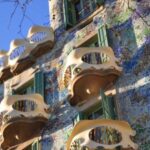 Les célèbres œuvres de Gaudí à Barcelone
Les célèbres œuvres de Gaudí à Barcelone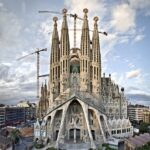 The Fascinating History of Sagrada Familia in Barcelona, Spain
The Fascinating History of Sagrada Familia in Barcelona, SpainIf you want to know other articles similar to Sagrada Familia: Barcelona's Iconic Basilica you can visit the category Sagrada Familia.
Leave a Reply

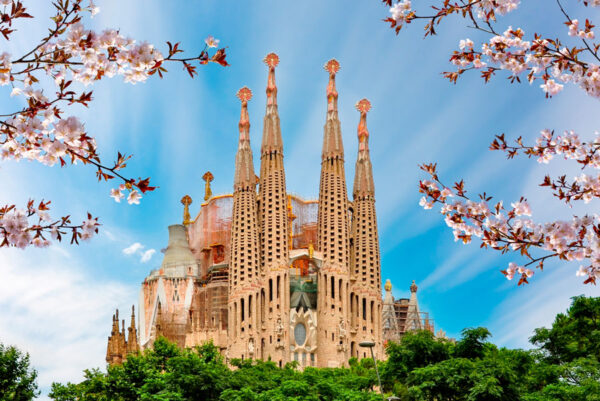
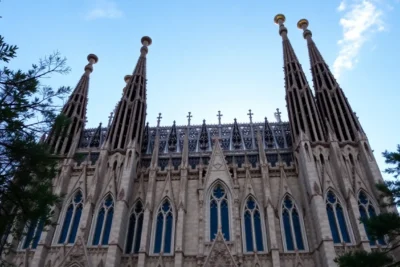
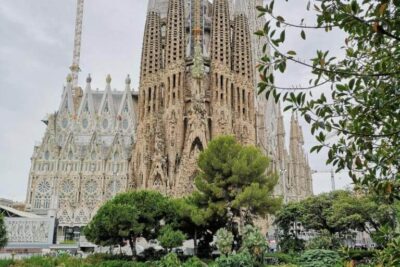
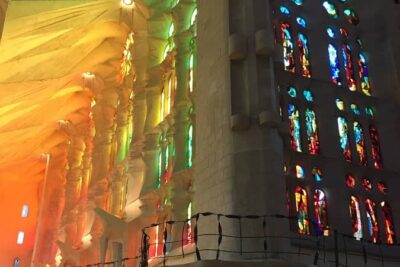
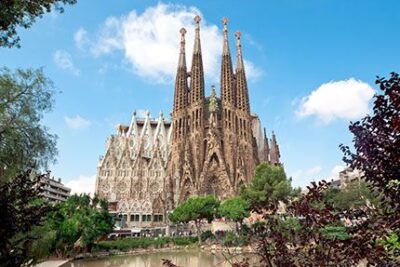
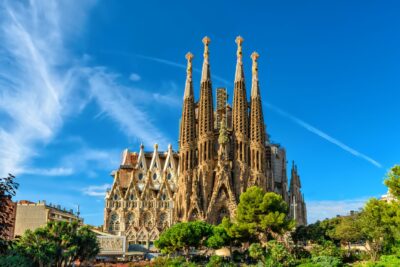
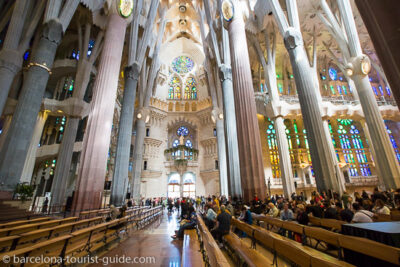
Read more!